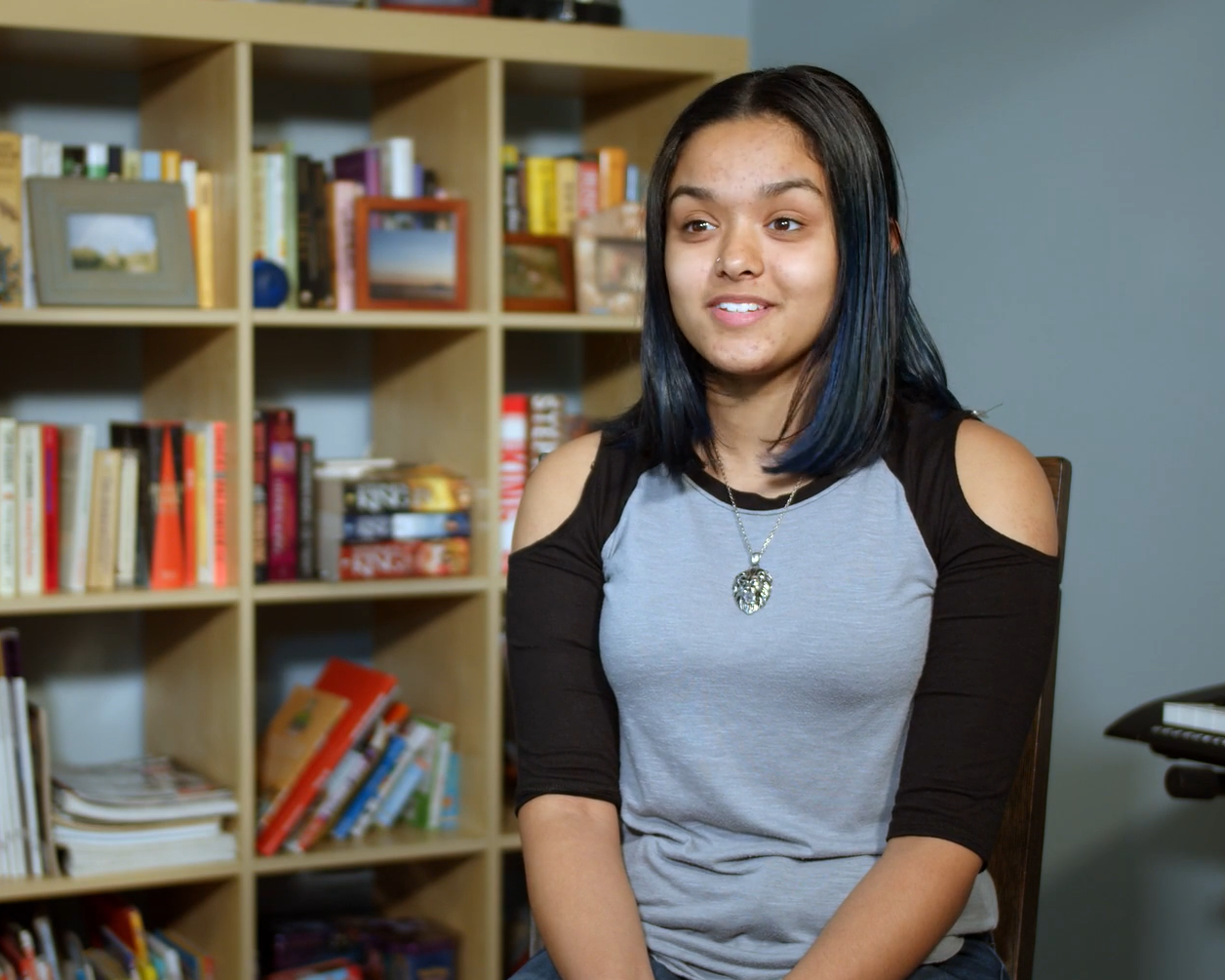Study by The Consultation Center at Yale University School of Medicine and The Village for Families & Children demonstrates significant reduction in trauma-related symptoms for Medicaid-eligible children who received EMDR treatment
Watch: Fifteen-year-old Jazlyn Coates of Manchester and 16-year-old Asha Nahar of South Windsor tell their stories.
Read: How does EMDR work?
Hartford and New Haven, Conn., November 19, 2019 – A study by The Village for Families & Children and Yale University School of Medicine Consultation Center demonstrates that a recognized psychotherapy technique originally developed to help war veterans is also helping at-risk children and adolescents in Connecticut process the trauma they’ve experienced from sexual or emotional abuse, loss or separation and domestic or community violence.
Originally developed to treat adults with post-traumatic stress disorder (PTSD), anxiety and phobias, Eye Movement Desensitization & Reprocessing (EMDR) therapy is a recognized and accepted method to help children process traumatic experiences. Unfortunately, access to EMDR is often limited to families whose private health insurance policies cover treatment.
Conducted by The Village for Families & Children and Yale University School of Medicine Consultation Center, led by Associate Professor of Psychiatry Joy Kaufman, Ph.D., the study’s findings support expansion of resources to fund EMDR training and certification of clinicians at community mental health organizations across the state.
The study is part of a Substance Abuse and Mental Health Services Administration (SAMHSA) grant The Village received in 2012 to expand evidence-based treatment options, including EMDR, for children ages 6-18 in their organization’s behavioral health clinics. The study demonstrates statistically significant reductions in trauma-related symptoms for the 278 children and youth who were treated by EMDR-trained clinicians at The Village between 2012 and 2016.
Children and youth receiving EMDR treatment during the study period had a significant history of exposure to potentially traumatic events, with an average exposure rate to 6.5 different types of events. Most common causes of trauma were unexpected separation from someone the child or adolescent loves and depends on (70%), witnessing a family member get arrested or be put in jail (54%), having been physically hurt or threatened by someone close to them (46%), experiencing lack of care (food, clothing or housing) (32%), having been forced to see or do something sexual (26%), and having someone close to them try to kill or hurt themselves (24%).
A third of the youth who received EMDR treatment during the study period had a much higher level of problem behaviors as a result of their traumatic experiences. While all the children improved over time, those children who had higher levels of trauma symptoms improved at a faster rate than those with lower levels, suggesting that receiving EMDR helped to reduce symptoms for those youth most impaired at intake.
“The team at the Village is successfully implementing EMDR for youth at risk for poor developmental outcomes from their traumatic experiences who are from low resource communities. Youth who participated in EMDR treatment during our study experienced significant reductions in their symptoms, enabling them to better engage in family, school and community,” Dr. Kaufman, the study’s lead investigator, reported.
“EMDR offers unique aspects that make this treatment a good option for many children and youth who experience trauma,” said Jennifer V. Lusa, LCSW, Ph.D., associate vice president, intensive treatment at The Village.
“First, the child doesn’t have to talk about the trauma itself. This makes it easier to engage very young children who don’t have the verbal skills to fully articulate their experience. The child or adolescent doesn’t have to re-live the experience in detail with the therapist. This helps focus the therapy on addressing the associated feelings, beliefs and behaviors related to the incident. It does not require the caregiver to be involved, which makes it a good fit for parents who can’t be involved due to work obligations, custody issues or alleged abuse. Finally, EMDR can reduce the level of vicarious trauma exposure for clinicians because they do not need to hear about every aspect of the client’s experience.”
“While the Connecticut Department of Children & Families has invested in providing trauma treatment for children and youth in Connecticut and lists EMDR as an effective treatment, state funding has not been available to expand delivery of EMDR outside the Hartford area,” said Liz Bryden, senior vice president at The Village. “We hope that our success at The Village in helping children and youth with EMDR therapy can fuel expansion of this model in publicly-funded mental health clinics.”
Funded by a grant from the Connecticut Health Foundation.
